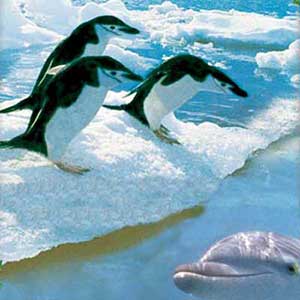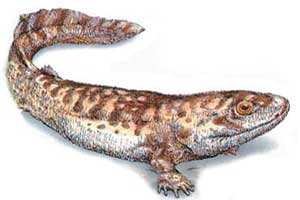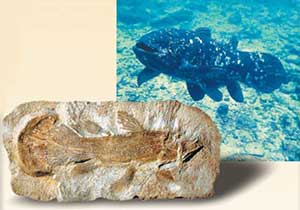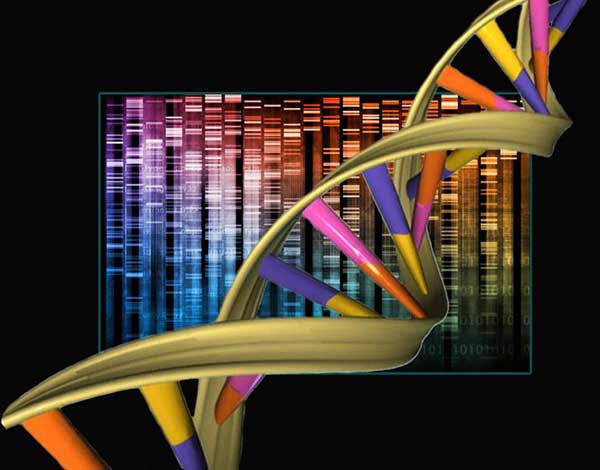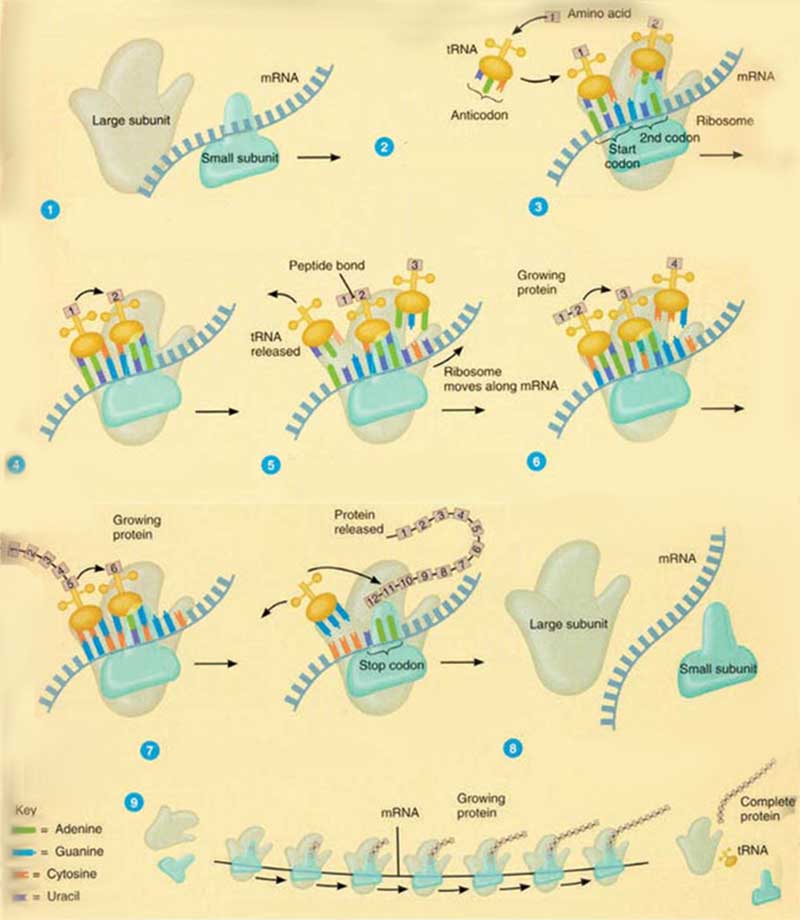Bigotry: The Dark Danger
A Definitive Reply to Evolutionist Propaganda

DOWNLOAD THE BOOK
CHAPTERS OF THE BOOK
- Introduction
- A Series of Blunders Regarding Monkey Intelligence
- The Smuggling Incident National Geographic TV Declined To Cover
- National Geographic TV's Undersea Fairy Tales
- Tall Tales From The National Geographic Channel
- Tales of Transformation from National Geographic Television
- The “Mitochondrial Eve” Deception On The Discovery Channel
- The Dino-Bird Fantasy On The Discovery Channel
- Errors Concerning Human Intelligence From The Discovery Channel
- The Discovery Channel's Spider Dilemma
- Evolutionst Propaganda on The History Channel
- The History Channel's Darwinist and Atheist Propaganda
- New Scientist’s Latest Myth:"Hiccups are a Legacy from Evolution"
- New Scientist’s “ Evolution with Climate” Error
- Paul Davies' Desperate Case for a “Multiverse”
- Evolutionary Tall Tales From The BBC -I-
- Evolutionary Tall Tales From The BBC –II-
- Evolutionary Tall Tales From The BBC –III-
- The BBC's Functionless Tissue Error In Its Documentary The Human Body
- BBC's Evolution of The Human Brain Error
- The Evolutionist Deceptions in the Documentary the Shape of Life
- Evolutionist Deceptions Continue with the Arthropods in the Shape of Life Documentary
- The Evolutionists are Still Struggling with the Same Dilemma: The Origin of Flight
- New Fossil Fish Discoveries Pose a New Dilemma for the Theory of Evolution
- The Latest Version of Baseless Evolutionist Scenarios in Scientific American: Nutrition
- Time Writer M. Lemonick's Mind-Body Error
< <
6 / total: 26
Tales of Transformation from National Geographic Television
National Geographic TV recently broadcast a documentary called Evolution –The Great Transformations. It mainly concentrated on the origin of whales, and devoted considerable space to evolutionist claims regarding their transition from the sea to the land, together with comments concerning at which stages such transitions might have come about. National Geographic TV's favored solution to the question of the origin of whales was an interesting one: It was proposed that dogs surviving by eating corpses on the sea shore decided to live in the sea in order to find a better supply of food. Over time their front legs turned into fins and they lost their back legs altogether, thus giving rise to whales. In these imaginary scenarios dreamed up by National Geographic TV accompanied by computer reconstructions, living things with completely different physical structures easily turned into other creatures: dogs into whales, for instance, or fish into land-dwellers. Yet what was related was totally based on imagination, and possessed no scientific significance or value. The drawings produced consisted of nothing more than the scenarios demanded by the Darwinist theory, which is entirely lacking in any scientific proof. In this article, we shall be explaining how the great transformations discussed on National Geographic TV never actually happened. A Whale Story for the Very Young
The origin of whales, and of sea mammals in general, is a very important question from the point of view of the theory of evolution. The theory maintains that sea-dwelling creatures moved onto the land, where mammals evolved. This leads to an important question regarding the existence of marine mammals, one which is difficult to answer: If mammals evolved on land, how and why did they return to the sea? Charles Darwin gave considerable thought to this question, which represented a serious dilemma for his theory, but failed to come up with a conclusion. On this point, which truly deadlocked his theory, he was forced to suggest a none-too-convincing ancestor. The animal Darwin suggested as the ancestor of whales was the bear. He said, "I can see no difficulty in a race of bears being rendered, by natural selection, more and more aquatic in their structure and habits, with larger and larger mouths, till a creature was produced as monstrous as a whale."1 While applauding Darwin's imagination, evolutionists are now of the view that whales must have had some other ancestor. The latest creature suggested to fill this vacancy is a species of dog. National Geographic magazine embarked on a campaign of whale propaganda in its November 2001 edition, publishing this inconsistent claim in a 14-page article, complete with illustrations. We published a detailed response to this "whale evolution" claim, revealing all its contradictions and inconsistencies, in a paper on our website, www.harun-yahya.net. The whale story on the TV screens went no further than the scenarios in the magazine, and made no new claims. For that reason, we shall not be going into scientific detail regarding those points, which invalidate these claims about the whale, recommending instead that our readers to turn to our original article. "A Whale Fantasy from National Geographic"://harun-yahya.net/en/works/3378/a-whale-fantasy-from-national The Problems with the Transition from Sea to Land and the Acanthostega ErrorOne of the so-called evolutionary transformations discussed on National Geographic TV had to do with the theory of the transition from the sea to the land. This theory suggests that fish emerged in the sea by means of evolution and moved onto the land some 370 million years ago. No scientific evidence can be produced to show how fish, whose organs and systems were completely suited to allowing them to live in the sea, could have survived on land, nor how they could have turned into other species. Instead of scientifically examining one of the fundamental dogmas of Darwinism, National Geographic TV glosses it over with a fairy-tale account. The scale of the deception represented by this claim, so blindly defended by National Geographic TV, becomes even clearer upon examination of the fossil record. According to Darwin, species evolved from a common ancestor, and this evolutionary process must have happened in stages. In the event of one species' evolving from another, there should be a great many intermediate forms between the two. The natural conclusion from this would be that the geological strata should be full of countless fossils displaying such intermediate characteristics. Yet, the situation in the fossil record is actually the exact opposite. Fossils appear to be divided into very clear categories, and species appear to have possessed their characteristic traits from the very beginning. New categories of living things always appear suddenly in the fossil record. The efforts of evolutionist paleontologists all over the world have been fruitless, and the long-sought-for missing links have never been found. This demonstrates very clearly why no process such as evolution ever happened. National Geographic TV, on the other hand, covers up the dilemma that fossils pose for the theory and portrays the transition from sea to land as if it had actually happened. The TV channel refuses to accept the collapse of Darwinism, and therefore clings to the extinct species known as Acanthostega. Acanthostega and What it Brings to Mind
Acanthostega is a sea creature with gills. Its age is estimated at some 360 million years. Jenny Clack, a paleontologist from Cambridge University, maintains that this fossil possesses a hand, and that on this hand there are eight fingers, for which reason it is an intermediate form between fish and tetrapods (four-footed land vertebrates). Taking this fossil as their starting point, evolutionists claim that instead of fish developing feet after moving onto the land, they first developed feet and then made that transition. Yet this claim is inconsistent. First of all, despite being an evolutionist, Clack clearly states that she does not know whether Acanthostega made the transition to the land or not. It is an error to regard a marine-dwelling creature with certain bone-like structures in its fins as a form that brought about the transition from sea to land. The fact that evolutionists are making this error shows how quickly they have forgotten their mistakes over the Coelacanth, which was discovered to be living up until 65 years ago.
Up until the end of 1930s, evolutionists portrayed the Coelacanth as an intermediate form. It was thought that the bones in the fins of this 200-million-year-old fossil turned into feet, which carried the creature when it moved onto the land. In 1938, however, they learnt to their great surprise that Coelacanth was still living. On close examination, it was revealed that these fish caught by fishermen off the coast of Madagascar had undergone no changes at all in the last 200 million years. Furthermore, the organ which evolutionists had believed to be a primitive lung turned out to be nothing but a fat-filled swimbladder. Moreover, a great many more Coelacanths were caught shortly afterwards, and evolutionists had to abandon forever the claim that the creature represented an intermediate form. As can be seen from the Coelacanth example, as well as that of Acanthostega, marine creatures with bone-like structures are portrayed as intermediate forms, not because they might have been able to live on land, but because of evolutionists' prejudices. Obstacles to the Transition from Water to LandThe profound physiological differences between land and marine mammals can be divided into five basic categories: 1. Weight-bearing: Sea-dwelling creatures have no problem in bearing their own weight in the sea. However, most land-dwelling creatures consume 40% of their energy just in carrying their bodies around. Creatures making the transition from water to land would at the same time have had to develop new muscular and skeletal systems (!) to meet this energy need, and this could not have come about by chance mutations. 2. Heat Retention: On land, the temperature can change quickly, and fluctuates over a wide range. Land-dwelling creatures possess a physical mechanism that can withstand such great temperature changes. However, in the sea, the temperature changes slowly and within a narrower range. A living organism with a body system regulated according to the constant temperature of the sea would need to acquire a protective system to ensure minimum harm from the temperature changes on land. It is preposterous to claim that fish acquired such a system by random mutations as soon as they stepped onto land. 3. Water: Essential to metabolism, water needs to be used economically due to its relative scarcity on land. For instance, the skin has to be able to permit a certain amount of water loss, while also preventing excessive evaporation. That is why land-dwelling creatures experience thirst, something sea-dwelling creatures do not do. For this reason, the skin of sea-dwelling animals is not suitable for a non-aquatic habitat. 4. Kidneys: Sea-dwelling organisms discharge waste materials, especially ammonia, by means of their aquatic environment. On land, water has to be used economically. This is why these living beings have a kidney system. Thanks to the kidneys, ammonia is stored by being converted into urea and the minimum amount of water is used during its excretion. In addition, new systems are needed to provide for the kidney's functioning. In short, in order for the passage from water to land to have occurred, living things without a kidney would have had to develop a kidney system all at once. 5. Respiratory system: Fish "breathe" by taking in oxygen dissolved in water, which they pass through their gills. They cannot live more than a few minutes out of water. In order to survive on land, they would have to acquire a perfect lung system all of a sudden. It is most certainly impossible that all of these dramatic physiological changes could have happened in the same organism at the same time, and all by chance.
National Geographic TV is Reluctant to Tell The Truth About the Cambrian ExplosionOne section at the beginning of the documentary "Evolution –The Great Transformations" is devoted to the Cambrian Period. This is when organisms with complex physical structures are first encountered in the fossil record. The most basic categories of living things are known as "phyla." And it is most interesting that just about all the phyla now living should have emerged in the Cambrian Period. Before that time, there were only a few phyla, whereas the fossil record shows the number of phyla emerging during the Cambrian to be around 100. This enormous leap in the variety of living things at that time is so impressive that it has been given the name "Cambrian Explosion" in the scientific literature. The Cambrian Explosion represents one of the most serious dilemmas facing the theory of evolution. The National Geographic TV channel is reluctant to make the facts regarding that period clear, offering an obscure account instead. The facts concealed by National Geographic TV are expressed by the well-known evolutionist Richard Monastersky in these terms:
Jan Bergström, a paleontologist who studied the early Cambrian deposits also says:
No similar organism which evolutionists might be able to put forward as the "ancestor" of the living things which emerged in the Cambrian Explosion exists. The creatures of the Cambrian Explosion came into being instantaneously, with all their features perfectly formed. This, of course, indicates that creation lies at the root of the Cambrian Explosion. Another aspect of the Cambrian Period explosion, which undermines evolution, is that there are considerably fewer phyla today than there were during the Cambrian. According to the theory of evolution, there should have been an increase over time in the number of categories of living things. Yet, the fossil record demonstrates the exact opposite. The number of phyla existing today is less than half the number that emerged during the Cambrian; the others have gradually become extinct. One of the most important critics of Darwinism in the world today is the University of California Berkeley professor Phillip E. Johnson, who openly reveals the contradiction between these facts and Darwinism:
There can be only one reason for the indirect way this is dealt with in the documentary screened by National Geographic: This explosion shows that life on Earth did not come about by chance, but emerged suddenly and perfectly formed—in other words, that it was created. National Geographic TV's DNA Error
In a later part of the National Geographic TV documentary, another major error appears, when it is claimed that genetic similarities account for so-called evolutionary transformations. We are told how similar organs in organisms from different species are controlled by similar genes, and it is then suggested that small changes in the DNA which controls such similarities between organisms can give rise to new species. Yet, this claim is a total violation of all experiments and observations in the field of genetics: Chance alterations in the genes (mutations) have never been seen to develop living things or to increase their genetic information. For nearly a century, scientists studying the inheritance mechanisms by which physical features are encoded and passed on from generation to generation have obtained findings revealing that DNA is a most complex design directed by exceptional control mechanisms. Even a general overview of the structure of DNA will be sufficient to demonstrate that the claims of the Darwinists go no further than fantasy, and that these need to be distinguished from the science of genetics. DNA: The Molecule Which Refutes EvolutionThe DNA molecule is found in structures that are specially packaged in the form of chromosomes. In the cell nucleus, far too small to be seen by the naked eye, are curled a total of 3 meters of DNA strings. These spiral DNA strings bound up in the chromosomes are divided up into the parts we know as "genes." Despite the tiny volume occupied by this packaging system, it possesses a huge information-storage capacity. It is calculated that there is enough information to fill around 1 million encyclopaedia pages in the nucleus of a single human cell. Exceedingly complex systems allow this information to function. The functioning of the DNA molecule is of vital importance to a living thing's survival. Every stage of this functioning is controlled. Some stages in the functioning of the perfect system that is DNA are the following: Encoding: Nucleotides are sequenced in the DNA string. There are four types of these; adenine, guanine, thymine and cytosine. Consecutively arranged, three-part nucleotide sequences are known as "codons." If we imagine the nucleotides as letters (A, T, C and G), then the codons are words (AAT, CAG, TCC, etc.). Location: All the information describing all of a living thing's physical and biochemical structures is set out in the cell nucleus. However, cells in different structures will generally only require that part of the information for their own functioning. For that reason, the necessary information must be located within the huge information bank, which includes all the details of the body plan. This is done by means of enzymes: enzymes stand at specific points and open up the links which extend between the two spiral strings of the DNA, like a zipper. The points where the zipper begins and stops opening, are the borders of the relevant information. It is rather as if enzymes searched among the shelves of a giant library and took out the book they were looking for. This is a genuine miracle, because enzymes are nothing more than molecules made up of unconscious atoms. Reading: After the required section of DNA has been found, the special enzymes attached to this section begin to read the nucleotides, three by three. The reading of these triplet nucleotide strings, in which the information is encoded, is a very particular phenomenon. The enzyme, which carries out the reading process, separates the combined millions of nucleotides into the triplets. This process takes less than one second. Translation: There are four types of nucleotides in DNA. The proteins, which will be used in the activities and development of the organism, however, emerge from amino acids, not from the nucleotides. Living things contain 20 amino acids. In essence, the language of DNA consists of four letters, but the language of proteins consists of 20. Thus, these letters are different from one another. Yet, a surprising "translation" takes place: the enzymes, which read the codons in the DNA, "understand" that this codon refers to an amino-acid, despite the fact that there are no amino acids in the codon. The nucleotide language in the DNA is translated into the amino-acid language in the protein. Unconscious enzymes thus work yet another miracle. Repair: Cell multiplication in the development of the body is of vital importance. During this process, the DNA in the dividing cell is copied and reproduced in the new cell. During this replication, some 3.1 billion nucleotides need to be copied in exactly the same order. If just one nucleotide in a gene is missing, then the codons in the new nucleotide order will go wrong, resulting in the synthesis of totally different proteins, which may in turn result in the death of the organism. (With the missing nucleotide, all the triple-read codons will change.) There is a system in the cells which checks and repairs these mistakes (mutations). The copied nucleotide string is checked against the original, and any errors are restored to the original form. This repair process, known as "proofreading," takes place an average of 20,000 times a second in the human body.
The complex design of these systems in DNA makes the claims of genetic transformation put forward on National Geographic TV ridiculous. Random changes in DNA—mutations, in other words—damage the sensitive genetic code in living things and give rise to abnormal organs. As shown on National Geographic, embryos exposed to poison or radiation are born totally abnormal. Mutation experiments over nearly a century have not been seen to add any information to organisms' DNA. This fact reveals the invalidity of the claim that organisms evolved from simple to complex forms by chance mutations. Beyond these scientific facts, we can also see the truth of this from our experiences in our daily lives. Random changes in complex designs do not turn these into other complex designs. For instance, taking a chip out of a jet airplane's electronic circuits does not turn that plane into a helicopter. In short, the complex structure of DNA represents a great obstacle to the theory of evolution. National Geographic TV's claim that DNA possesses a structure which can facilitate so-called evolution rests on Darwinist prejudices, not on the scientific facts. The Same Old Scenarios from National Geographic TVIn the last part of the program, the claim is made that man and chimpanzees evolved from a common ancestor. This part relies on an account by the evolutionist paleontologist Donald Johanson, and the methods of glossing over and distortion employed in the beginning of the program once again attract one's attention. Not a word is mentioned about recent fossil discoveries that have left the theory of evolution in tatters. The fact that National Geographic TV, which claims to be a channel of science and discovery, devotes no space to the fossil known as Sahelanthropus tchadensis, which has led to intense debates in the world of paleontology and which has hit evolutionist scenarios like an atom bomb, once again clearly reveals its blind devotion to Darwinism.
Another issue ignored in this section concerned the scenario of a genetic relationship between man and chimpanzees. The old tales of a genetic relationship were trotted out once more, while research, which has revealed that the genetic similarity between the two species has been overstated by up to three times the correct figure, was ignored.
Conclusion: There is no Transformation Between SpeciesNo transformation between species ever happened. Species were created separately, together with their own genetic codes. Those species that have survived to the present day have never undergone any change. The Cambrian Explosion and the structure of DNA are proof of this. The stories about whales and the transition from water to the land supported by National Geographic TVare completely absurd. This channel, which supports nonsense of this kind in the face of modern scientific findings, is behaving in exactly the same way as those who once believed that the Earth was flat. It should give up these superstitions at once.
Footnotes1. Charles Darwin, The Origin of Species: A Facsimile of the First Edition, Harvard University Press, 1964, p. 184 2. Richard Monastersky, "Mysteries of the Orient," Discover, April 1993, p. 40. 3. Richard Monastersky, "Mysteries of the Orient," Discover, April 1993, p. 40. 4. Phillip E. Johnson, "Darwinism's Rules of Reasoning," Darwinism: Science or Philosophy by Buell Hearn, Foundation for Thought and Ethics, 1994, p.12
|
6 / total 26
You can read Harun Yahya's book A Definitive Reply to Evolutionist Propaganda online, share it on social networks such as Facebook and Twitter, download it to your computer, use it in your homework and theses, and publish, copy or reproduce it on your own web sites or blogs without paying any copyright fee, so long as you acknowledge this site as the reference.
